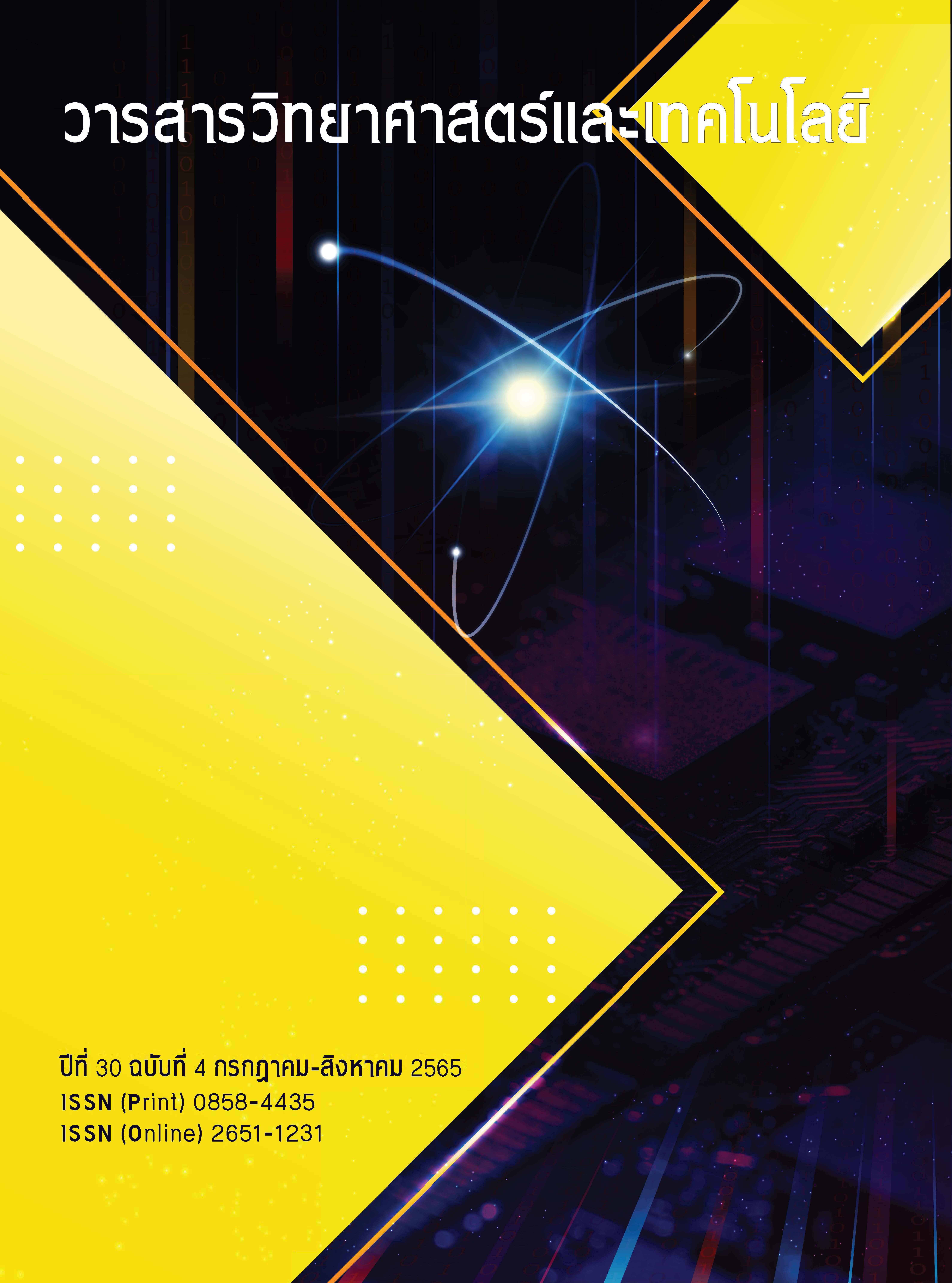Measurements of mass and number concentrations of PM2.5 in the ambient air at Doi Saket site during open burning season in Chiang Mai
Main Article Content
Abstract
In this study, mass and number concentrations of PM2.5 in the ambient air during open burning season in Chiang Mai, Thailand was measured and described. The monitoring station was placed and field evaluated in Research Unit of Applied Electric Field in Engineering, Rajamangala University of Technology Lanna, Doi Saket District, Chiang Mai Province, Thailand during 1 – 15 April, 2019. The PM2.5 mass and number concentrations were simultaneously measured by the DustTrak model 8533 and the Condensation Particle Counter (CPC) model 3750, respectively. The field study results showed that the trend of the number concentration of PM2.5 measured by the CPC agreed to within small differences with the mass concentration of PM2.5 measured by the DustTrak. The maximum, minimum and average PM2.5 mass concentrations measured by DustTrak that average over the measurement period was about 180.33 µg/m3, 42.13 µg/m3 and 101.71 µg/m3, respectively, and the maximum, minimum and average PM2.5 number concentration measured by the CPC that average over the measurement period was about 22,460.94 particles/cm3, 4,550.39 particles/cm3 and 11,517.39 particles/cm3, respectively. Finally, the relationship and the proportion between the mass and number concentrations of PM2.5 obtained will be beneficial for further planning, prevention and monitoring of impacts on human health and the environment.
Article Details
References
Intra, P., (2019). Electrostatic aerosol measurement and control technology, ChulaPress, Bangkok. (in Thai)
Hinds, WC., (1999). Aerosol Technology. John Wiley & Sons, New York.
Vinitketkumnuen U., Kalayanamitra K., Chewonarin T. and Kamens R.M. (2002). Particulate matter, PM 10 & PM2.5 levels, and airborne mutagenicity in Chiang Mai, Thailand, Mutation Research, 519; 121-131.
Thepnuan, D., Yabueng, N., Chantara, S., Prapamontol, T. and Tsai, Y.I. (2020). Simultaneous determination of carcinogenic PAHs and levoglucosan bound to PM2.5 for assessment of health risk and pollution sources during a smoke haze period. Chemosphere, 257; 127154.
Willeke, K. and Baron, P.A. (1993). Aerosol Measurement: Principles, Techniques, and Applications. John Wiley & Sons, New York.
EPA. (1997). National ambient air quality standards for particulate matter. Final Rule, Federal Register, 62, 38651.
Federal Register. (1997). National ambient air quality standards for particulate matter. 40 CFR Part 50.7, Section 8.2, 62(138), July 18.
Intra, P. and Tippayawong, N. (2007). An overview of aerosol particle sensors for size distribution measurement. Maejo International Journal of Science and Technology, 1; 120 – 136.
Leiva, G.M.A., Santibañez, D.A., Ibarra, S., Matus, P., Seguel, R., (2013). A Five-year Study of Particulate Matter (PM2.5) and Cerebrovascular Diseases. Environmental Pollution, 181; 1-6.
Riipinen, I., Pierce, J. R., Yli-Juuti, T., Nieminen, T., Häkkinen, S., Ehn, M., Junninen, H., Lehtipalo, K., Petäjä, T., Slowik, J., Chang, R., Shantz, N. C., Abbatt, J., Leaitch, W. R., Kerminen, V.-M., Worsnop, D. R., Pandis, S. N., Donahue, N. M., and Kulmala, M. (2011). Organic condensation: a vital link connecting aerosol formation to cloud condensation nuclei (CCN) concentrations. Atmospheric Chemistry and Physics, 11; 3865–3878.
Handy, R. D. and Shaw, B. J. (2007). Toxic effects of nanoparticles and nanomaterials: Implications for public health, risk assessment and the public perception of nanotechnology. Health,Risk & Society, 9(2); 125-144.
Silva, L.F.O., da Boit, K.M. (2011). Nanominerals and nanoparticles in feed coal and bottom ash: implications for human
health effects. Environmental Monitoring and Assessment, 174; 187–197.
Timko, M.T., Yu, Z., Kroll, J., Jayne, J.T., Worsnop, D.R., Miake-Lye, R.C., Onasch, T.B., Liscinsky, D., Kirchstetter, T.W., Destaillats, H., Holder, A.L., Smith, J.D. and Wilson, K.R., (2009) Sampling Artifacts from Conductive Silicone Tubing. Aerosol Science and Technology, 43(9); 855-865.
Kwon, HS., Ryu, M.H. and Carlsten, C. (2020). Ultrafine particles: unique physicochemical properties relevant to health and disease. Experimental & Molecular Medicine, 52; 318–328.


